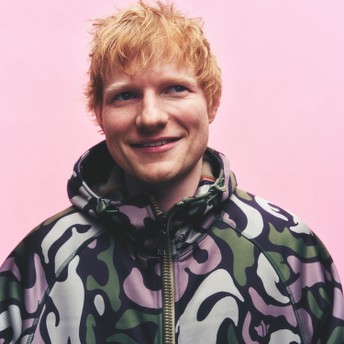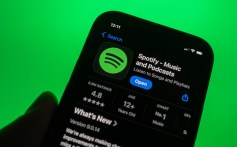News
Page: 186
Trending on Billboard
When Michael Bublé suggested that “Wreck-It” Ralph Edwards could smash the competition in this 28th season of The Voice, he was onto something.
Edwards had just finished an impressive rendition of Teddy Swims’ “I Lose Control” in his Battle with Jerrell Melton, when Bublé let the love flow.
Explore
See latest videos, charts and news
The Fresno, California could “go far on the show,” he remarked.
There’s apparently no stopping Edwards, as he shifted gears from that final round of Battles on Monday night, Oct. 27, and leapt into the first wave of Knockouts.
Next up, the 30-year-old Team Snoop singer went for the heartstrings with a cover of Ed Sheeran’s “Dive.” Edwards, who proposed to his partner after his Blind Audition, didn’t have any trouble finding the emotional buttons.
“Wow, Ralph,” coach Niall Horan enthused. “The stuff that you were doing. I actually didn’t recognize it as your voice. It was so different than what we’ve heard. You could easily win this show, dude.”
Reba McEntire weighted in. “Wow. What a voice,” the coach and country star remarked. “It comes from your toenails. It’s just incredible.”
Bublé knows he’s looking at, and hearing, the real deal. “You have that grit in your voice, but man, you sort of saved it. You let us hear the sweetness and the softness,” the Canadian king of Christmas remarked. “It looked easy for you, dude.”
Snoop Dogg had a call to make. Edwards or Kenny Iko?
There could be only one. The rap legend tapped Edwards, while Iko goes home. “I think Ralph has the ‘it’ factor,” Snoop noted. “The ‘it’ factor is that he could actually win it, this competition. Knockout performances are really the groundbreaking, award-worthy, top of the line, performing at his highest level.”
Earlier, Snoop welcomed Zac Brown to mentor his team before the Knockouts. “My team is smoking,” Snoop remarked, with some authority.
The Knockout episodes will air every Monday on NBC until Nov. 24. Then, the Playoffs will beam out on Monday, Dec. 1 and Monday, Dec. 8 on NBC, with the Season 28 Live Finale set to spread over the two nights of Dec. 15 and 16. Episodes stream the following day on Peacock.
Watch Iko and Edwards’ Knockout performances below.
Trending on Billboard
Cornel Wilczek, Megan Washington and Bluey composer Joff Bush were in the winners’ circle Tuesday night, Oct. 28, as the 2025 Screen Music Awards were presented in Brisbane’s Fortitude Valley.
Explore
See latest videos, charts and news
With two donut-shaped trophies, Wilczek, the Melbourne-based composer, was the big winner on the night, taking out best music for a television drama (Fake) alongside 2024 emerging screen composer of the year champion Alex Olijnyk; plus best opening title television theme with Thomas Rouch for the Netflix adaptation of the Jane Harper book, The Survivors.
Washington, winner of several ARIA Awards, including best female artist back in 2010, now has a Screen Music Award for her collection. The homegrown talent won for best original song composed for the Screen with “Dream On,” lifted from How to Make Gravy, the film adaptation of Paul Kelly’s beloved Christmas song.
The gravy kept flowing as Electric Fields, who performed the song in the movie, closed the evening with a stunning performance, accompanied by a choir led by Deline Briscoe.
Another Queensland creative, the celebrated children’s screen composer, Joff Bush, scooped most performed screen composer – overseas for his work on Bluey, the most-streamed show in the United States in 2024. Bush won the same category in 2023.
Meanwhile, Adam Gock and Dinesh Wicks extended their impressive streak, scoring most performed screen composer – Australia for the 11th time, thanks to their work on Farmer Wants a Wife, LEGO Masters, MasterChef and Travel Guides.
Jed Kurzel nabbed feature film score of the year for the British period action-drama Tornado, his fourth win in the category after Monkey Man (2024), Slow West (2015) and Snowtown (2011).
Veteran screen composer Christopher Gordon was awarded the coveted distinguished services to the Australian screen award in recognition of his “extraordinary body of work and enduring contribution to the screen music industry.”
Legendary Australian director Bruce Beresford was on hand to present the trophy to Gordon, with whom he has collaborated on several acclaimed films including Ladies in Black and Mao’s Last Dancer.
“I feel like such an imposter, there are so many people worthy of this award,” Gordon remarked, before exploring his self-destructive 20s and how he got a fresh, healthier mindset through his connections with the Screen Writers Guild. “I got my life together.” He continued, “the support that I felt and the sense of community with other composers was extremely important for me.” He also discussed the drought he experienced between film scores, something every creative needs to prepare for. “You really need patience in this business.”
Stage and screen star David Wenham hosted the ceremony alongside Mark Coles Smith and Nathalie Morris, with Erkki Veltheim returning as music director, helming a live orchestra performing selections from nominated works.
The evening got away with a bloody Halloween trick, with a creepy orchestral piece set to a grisly edit from Wolf Creek, the horror film which this year celebrates its 20th anniversary.
Wenham would describe the moment as “probably the most terrifying opening to an awards, ever.” It was a good thing the hundreds of guests at Fortitude Music Hall had finished their dinner.
Presented for the first time in the Sunshine State, the annual ceremony is an initiative of APRA AMCOS and the Australian Guild of Screen Composers (AGSC).
During his third and final speech leading the AGSC as president, Dale Cornelius touched on streaming quotas, AI, the human condition and more. Cornelius will hand the reins over to composer and Go-Betweens great Amanda Brown, who was in the audience, but not before he returned to the stage to collect the win for best music for a short film, for The Way Home.
Timing is everything. And, with the federal government on Monday ruling out a controversial proposed exemption to the Copyright Act that would allow for text and data mining, the timing wasn’t lost on guests and speakers.
“This is a massive win,” Jenny Morris, chair of APRA AMCOS, remarked from the podium. And not just for APRA AMCOS members, “but for every creator in the room and the country.” She continued, “we said ‘no.’ And importantly, we said no together…when we unite, when we speak with one voice, we are unstoppable.”
The music community, she continued, had real cause to celebrate after a such an “historic” victory.
Click here for the full list of 2025 Screen Music Awards winners.
Trending on Billboard
Tame Impala’s first full-length studio album in five years, Deadbeat, makes a splashy start on Billboard’s charts, as the set launches at No. 1 on six different rankings (dated Nov. 1). It bows at No. 1 on Top Rock & Alternative Albums, Top Rock Albums, Top Alternative Albums, Top Dance Albums (the act’s first entry on the list), Vinyl Albums and Indie Store Album Sales.
Deadbeat also lands in the top 10 on the all-genre Billboard 200 (No. 4, the act’s third top five-charting project), Top Album Sales (No. 2), Top Current Album Sales (No. 2) and Top Streaming Albums (No. 7).
Deadbeat is Tame Impala’s (Kevin Parker) first release for Columbia Records after signing with the label in July. According to a press statement announcing the album in September, the project was inspired by the Western Australia rave scene.
The album debuts with 70,000 equivalent album units earned in the United States in the week ending Oct. 23, according to Luminate, with 38,000 of that sum in pure album sales — individual purchases of physical and digital copies of the album. Vinyl sales account for 28,000 of that total — the best week ever on vinyl for Tame Impala.
Tracks from Deadbeat also take over Billboard’s Hot Dance/Electronic Songs chart, with eight of the album’s cuts populating the 25-position ranking, including six of the top 10. “Dracula” debuts at No. 1 (the act’s first No. 1), followed by fellow new entries “My Old Ways” (No. 3), “No Reply” (No. 5), “Oblivion” (No. 7), “Not My World” (No. 8), “Afterthought” (No. 10), “End of Summer” (No. 11) and “Ethereal Connection” (No. 12).
Over on the Hot Rock & Alternative Songs chart, 11 of the 12 tracks from Deadbeat dot the 50-position tally: “Dracula” (rising 7-3, a new peak), “My Old Ways” (No. 8, debut), “Loser” (40-13, a new peak), “No Reply” (No. 17, debut), “Oblivion” (No. 21, debut), “Obsolete” (No. 22, debut), “Piece of Heaven” (No. 23, debut), “Not My World” (No. 24, debut), “Afterthought” (No. 27, debut), “End of Summer” (No. 31, reentry) and “See You On Monday (You’re Lost)” (No. 36, debut).
Deadbeat has also given Tame Impala its first entries on the all-genre Billboard Hot 100, as “Dracula,” which debuted in October, vaults into the top 40 for the first time, rising 59-33. Meanwhile, “My Old Ways” and “Loser” debut at Nos. 56 and 91, respectively.
Trending on Billboard ASCAP, BMI and SOCAN have all adopted policies to accept registrations of musical compositions partially generated using artificial intelligence (AI) tools, the PROs jointly announced Tuesday (Oct. 28), while noting that they will continue to reject registrations of fully AI-generated works. According to a press release, all three PROs define a partially […]
Trending on Billboard Spotify subscribers in the U.K., the world’s third-largest recorded music market, will be paying more for Spotify premium plans starting with the next billing cycle. As confirmed by a company spokesperson, Spotify customers in the U.K. were notified of upcoming price increases, marking the second time in approximately 18 months that Spotify […]
Trending on Billboard
Sia and her estranged husband are fighting over custody of their child amid divorce proceedings — and the allegations are getting ugly.
David Bernad, an oncologist who married Sia at the end of 2022, claims in a Monday (Oct. 27) court filing that the pop star is a drug addict who cannot adequately care for their 19-month-old son, Somersault. In a Tuesday (Oct. 28) response, Sia reveals that Bernad was recently under investigation for alleged possession of child pornography.
The claims come in California divorce proceedings, which Sia initiated this past March due to “irreconcilable differences.” Bernad has since been seeking hefty spousal support from Sia, and his request for more than $250,000 a month is set for a hearing in January.
Now, Bernad is asking for full custody of Somersault (referred to by the nickname “Summi” in court documents). He alleges in the Monday filing that Sia, who has been open about her past struggles with drug addiction, is once again using.
“Sia is an unfit and unreliable parent struggling with substance abuse and addiction, rendering her incapable of providing safe or stable care for Summi,” writes Bernad in a declaration. “I am the only safe and reliable parent for our son. I am a doctor, young, healthy, and have no criminal history or drug or alcohol addiction issues.”
Bernad says he witnessed Sia abuse ketamine and opioids during their marriage, and he claims doctors found barbiturates and benzodiazepines in her system during a hospital stay last month. He says Sia should have supervised visits with Summi, and only after she’s undergone a breathalyzer test. Bernad also wants the singer to submit to random drug testing and pay him $77,000 per month in child support.
Sia, however, counters in her Tuesday court filing that she has been “fully sober for over six months” and remains committed to recovery. She says Bernad is actually the one who parties and uses recreational drugs, and that this is one of the main reasons she chose to divorce him.
“Dan’s attempt to weaponize my past sobriety journey — an issue long resolved and well-documented — serves no legitimate purpose and is intended only to distort the facts and undermine my credibility before this court,” writes Sia in a declaration. “His willingness to dredge up decades-old history to serve his own financial and strategic interests demonstrates the extent to which he will go, even at the expense of his child and the child’s mother.”
Sia says Summi should remain in her primary custody, as has been the case since this summer. According to the court filings, Bernad agreed to this arrangement — including a stipulation that his own visits be supervised — because he was under investigation for alleged child pornography found on his computer hard drive in July.
Bernad “vehemently” denies any wrongdoing and claims Sia “planted” this illicit material on his hard drive. The Los Angeles Police Department and the city’s Department of Child and Family Services both looked into the claims but closed their investigations without any charges, citing a lack of evidence.
Nonetheless, Sia says she’s still not comfortable with Bernad spending unsupervised time with Summi. She says Bernad is not prepared to care for Summi by himself because he was an absentee parent during their marriage, often jetting overseas “at a moment’s notice.”
Sia’s lawyer declined to comment on the proceedings on Tuesday. A rep for Bernad did not immediately return a request for comment.

Trending on Billboard If there were a pop version of the Avengers, we think Ariana Grande‘s trio of early mentors would all be included. On the new Billboard Pop Shop Podcast, Katie & Keith are chatting about Ari kicking off the Wicked: For Good press tour by sitting down with Evan Ross Katz on his […]
Trending on Billboard Drake and online streamer Adin Ross are facing a class action lawsuit accusing them of promoting illegal gambling by endorsing the online sweepstake casino Stake. In a case filed Monday (Oct. 27), lawyers for a Missouri man say Drake, Ross and Stake engaged in “deceptive, fraudulent and unfair” practices in the state […]
Trending on Billboard
Julia Wolf went from a relatively unknown artist to notching a Drake collaboration seemingly overnight. The emerging singer joined the Zach Kang Show on Monday (Oct. 27), where she detailed how a Drake Instagram follow and DM led to them eventually collaborating on “Dog House” in September.
“We were freaking out, it was like 6 in the morning… It’s 6 a.m. and Tanner’s waking me up [at] 6 in the morning — ‘Champagnepapi followed you!’” she recalled. “Then it’s freaking Drake, and he DMs me lyrics of ‘In My Room.’ How do you have a regular day?”
Wolf explained that it was actually someone else who put him on and requested a Julia Wolf song when he was DJing for friends at a club.
“Drake was DJing with a group of five or six people at the back of a club,” she said. “He was playing all sorts of music and then this one girl, who was a friend of a friend, went up to him and was like, ‘Can you play ‘In My Room’ by Julia Wolf?’ He said he played it and stopped everything and reached out to me then and there. It was so cool. He’s a super open-minded guy.”
Wolf immediately got to writing after Drake asked her about any unreleased demos she had lying around that he could possibly use.
“That first day he was like, ‘Send me some demos.’ I had no demos to give him, so I went to my room. Literally just writing anything I can over [sic] loops,” she said. “I’m like, ‘What can I possibly say that Drake can resonate with?’ He’s resonating with ‘In My Room,’ he’s loving the album, he’s saying, ‘This is so me.’”
Wolf continued: “Out of the four or five things was ‘Dog House.’ It’s actually part of a larger song. The part in ‘Dog House’ was the chorus I had at the end. I sent it and it was immediate. He was like, ‘This is the one, this is my life. This is our song.’”
Plenty of time went by and Wolf was left in the dark as she had no idea what she sent would be turned into. Eventually, that changed on Sept. 9 when Drake’s “Dog House” arrived featuring YEAT with a photo of Wolf as the cover art.
The BYNX-produced track debuted at No. 54 on the Billboard Hot 100 and cracked the top 10 of the Hot R&B/Hip-Hop Songs chart.
Watch the full interview below. Talk about Drake starts just shy of the 39-minute mark.

Trending on Billboard Following the release of her searing new album West End Girl, Lily Allen says she’s leaving her past exactly where it belongs: the past. In a conversation with Interview Magazine published Tuesday (Oct. 28), the British singer — who split from actor David Harbour after four years of marriage in February — […]

 State Champ Radio
State Champ Radio 







